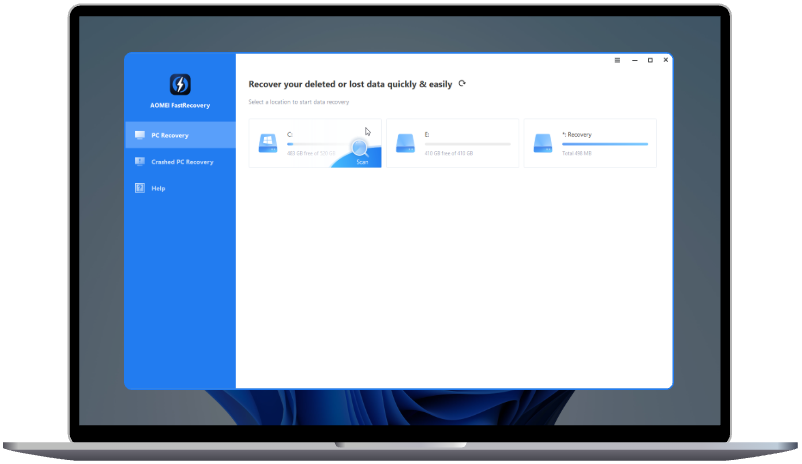[Solved] BitLocker Waiting for Activation: How to Turn Off in Windows 11/10?
BitLocker waiting for activation, how to turn off? Learn what it means, 2 easy fixes, and how to prevent future issues in this passage.
About BitLocker waiting for activation
Both Windows 11 and 10 users have reported the BitLocker waiting for activation issues on various forums. In Disk Management, a volume appears as "BitLocker Encrypted," but the Control Panel shows it's "BitLocker waiting for activation."
- Question from Microsoft Community
BitLocker is a built-in encryption tool in Windows 10/11 Pro and Enterprise that protects data by encrypting entire drives. However, users may sometimes see the "BitLocker Waiting for Activation" message, indicating an issue with the encryption process.
What does the BitLocker Waiting for Activation mean? When a volume is labeled "BitLocker Encrypted" in Disk Management but "BitLocker Waiting for Activation" in Control Panel, it generally means:
2. The Full Volume Encryption Key (FVEK) is stored in plaintext, making the data accessible.
3. Unauthorized users can potentially access the encrypted data.
If you need to check whether the BitLocker is suspended, you can press Win + R, type cmd, and press Ctrl + Shift + Enter to open Command Prompt as an administrator. Run the following command (replace C with the affected drive letter): manage-bde -on C: If you see:"No key protectors found"or "BitLocker protection is suspended until key protectors are created"This confirms that BitLocker is in a suspended state and needs activation.
Here is a table to help you better know about the why does the BitLocker waiting for activation issue occur.
| Possible Cause | Explanation | Solution |
|---|---|---|
| Encryption Not Started | BitLocker was enabled but not fully activated. | Manually start encryption via BitLocker settings. Or use a professional BitLocker management tool like AOMEI Partition Assistant. |
| System Restart Required | Some changes need a restart to complete encryption. | Restart your PC and check BitLocker status. |
| TPM (Trusted Platform Module) Issues | TPM is disabled or not working correctly. | Check and enable TPM in BIOS/UEFI and ensure it’s functional. |
| Group Policy Settings | Security policies may block activation. | Check and adjust Group Policy settings. |
| Lack of Admin Privileges | BitLocker needs admin rights to activate. | Run BitLocker as an administrator. |
| Drive Configuration Changes | Modifying, partitioning, or resizing BitLocker drive with wrong ways can interrupt activation. | Ensure the drive structure is stable before enabling BitLocker. |
Fix: BitLocker waiting for activation, how to turn off?
To address this, it's necessary to deactivate BitLocker waiting for activation and then re-enable it to ensure proper data protection.
Fix 1. Resume BitLocker suspension
If your BitLocker stuck on waiting for activation, you can run Command Prompt to turn off this utility. Now, follow the steps to resolve this problem.
Step 1. Press Windows key + X and choose "Command Prompt (Admin)" or "Windows PowerShell (Admin)" to open the command prompt window.
Step 2. Enter the following command and press Enter to suspend BitLocker on the C drive (replace C: with the appropriate drive letter if needed), this step is to suspend BitLocker:
manage-bde -protectors -disable C:
Step 3. Confirm that BitLocker is suspended by checking the status in the Control Panel or using the command:
manage-bde -status C:
Step 4. If you want to completely turn off BitLocker, enter the following command:
manage-bde -off C:
Fix 2. Complete BitLocker activation
To remove bitlocker waiting for activation, you can also go to control panel and follow the steps.
Step 1. Open an elevated Command Prompt and execute the command manage-bde c: -off to deactivate BitLocker without activation.
Step 2. Search for BitLocker, select "Manage BitLocker" from the top result.
Step 3. In the BitLocker Drive Encryption panel, click "Turn on BitLocker." Choose a method to back up your recovery key and follow on-screen instructions to complete fixing BitLocker waiting for activation how to turn off.
Once finished, the drive will be fully encrypted with BitLocker, ensuring access only with authorized rights.
Tip: How to easily deal with BitLocker problems?
If you find manage BitLocker on local is complex and prone to encounter tough errors that you cannot easily fix, you can use a third-party tool to effectively manage the utility. AOMEI Partition Assistant, a renowned computer problem solver has introduced a robust feature named BitLocker. It supports enabling BitLocker for Windows 10/11 users.
With the help of this software, you don’t have to worry about common problems such as forgetting the password, changing the password, or wanting to enable or disable BitLocker and then needing to search for guidance every time. It offers four options that allow you to manage BitLocker encryption with just a few clicks: back up the recovery key, change the password, lock the drive, and turn off BitLocker.
The Best Windows Disk Partition Manager and PC Optimizer
1. Back up recovery key
Step 1. When setting and confirming a password to encrypt the drive, you can choose the way to back up the recovery key.
If you select "Save to a file", please choose a location on your PC to save the recovery key.
Tips: Please do not save the recovery key in the encrypted drive path. For example, it is unable to encrypt D: and save the recovery key on the same D: drive.
If you select "Print the recovery key", it will enable the print function on your PC to print the recovery key. Then, you can click the "Next" button to finish the backup process.
2. Change BitLocker password
Step 1. Locate the encrypted drive for which you want to change the password, then click on the option "Change password".
Step 2. You have two options for changing the password: Use password to change drive password or Use recovery key to change drive password. Choose the method you prefer.
Step 3. If the change is successful, you'll see a window that says "Password changed successfully".
3. Lock/Unlock the drive
If the drive is unlocked, you can click the option "Lock the drive" to lock it directly.
If the drive is already locked, "Unlock the drive" will be the only available option to manage BitLocker. You must unlock the drive before you can manage BitLocker settings for the drive.
4. Turn off BitLocker
Besides easily turning on BitLocker on Windows 10 Home, AOMEI Partition Assistant also offers an easy way to turn it off.
Step 1. Locate the encrypted drive you want to decrypt, then click the option "Turn off BitLocker".
Step 2. You have two options for decrypting the drive: Use password to decrypt the drive or Use recovery key to decrypt the drive. Choose the method that suits your needs. And then begin the closing process.
Conclusion
BitLocker waiting for activation, how to turn off? You can resume BitLocker suspension or complete BitLocker activation to easily turn off BitLocker waiting for activation. If you want to effectively manage the BitLocker, it is advisable to use AOMEI Partition Assistant.
This multifunctional software also supports cloning disk, OS migration, allocating free space, App Mover, and partition management. For Windows Server users, kindly please choose the AOMEI Partition Assistant Server for a compatible environment.

